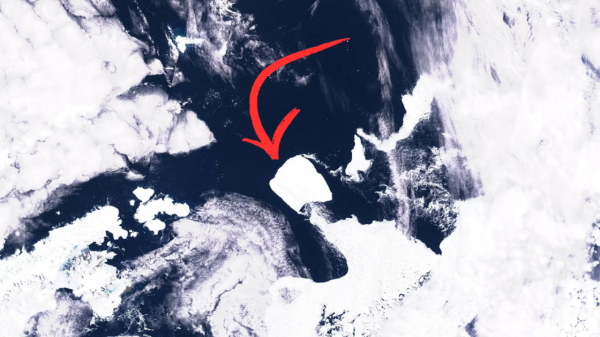World's largest iceberg A23a breaks free after 30 years, Is it concerning?
25 Nov 2023 17:20:57
Scientists around the world are concentrating on the world’s largest iceberg which was formerly part of Antarctica. The iceberg, named A23a, is finally on the move after being stuck to the ocean floor for more than 30 years.

It is on the move…
Dr Andrew Fleming, a remote sensing expert from the British Antarctic Survey told BBC News, “I asked a couple of colleagues about this, wondering if there was any possible change in shelf water temperatures that might have provoked it, but the consensus is the time had just come. It was grounded since 1986 but eventually it was going to decrease (in size) sufficiently to lose grip and start moving. I spotted first movement back in 2020.”
The winds and currents in recent months have accelerated the movement of A23a.
Weddell sector icebergs, such as A23a, typically follow the Antarctic Circumpolar Current and pass via “iceberg alley,” a route that explorer Ernest Shackleton took in 1916 following the sinking of his ship, the Endurance.
What happens next
Experts are predicting that the huge iceberg will be thrown towards the southern South Atlantic Ocean, close to the island of South Georgia, which is home to large icebergs sitting offshore.
Millions of seals, penguins, and other birds live on this island. There is concern that A23a could disrupt South Georgia Island’s ecology if it gets close to the island.The regular feeding routes of seals, penguins, and seabirds may be disturbed if grounding occurs in this area.
The importance of icebergs to the environment cannot be understated, notwithstanding possible disturbances. Mineral dust, essential nutrients that maintain the base of sea food cycles, is released as they melt.Scientists are now keeping a careful eye on A23a’s progress.